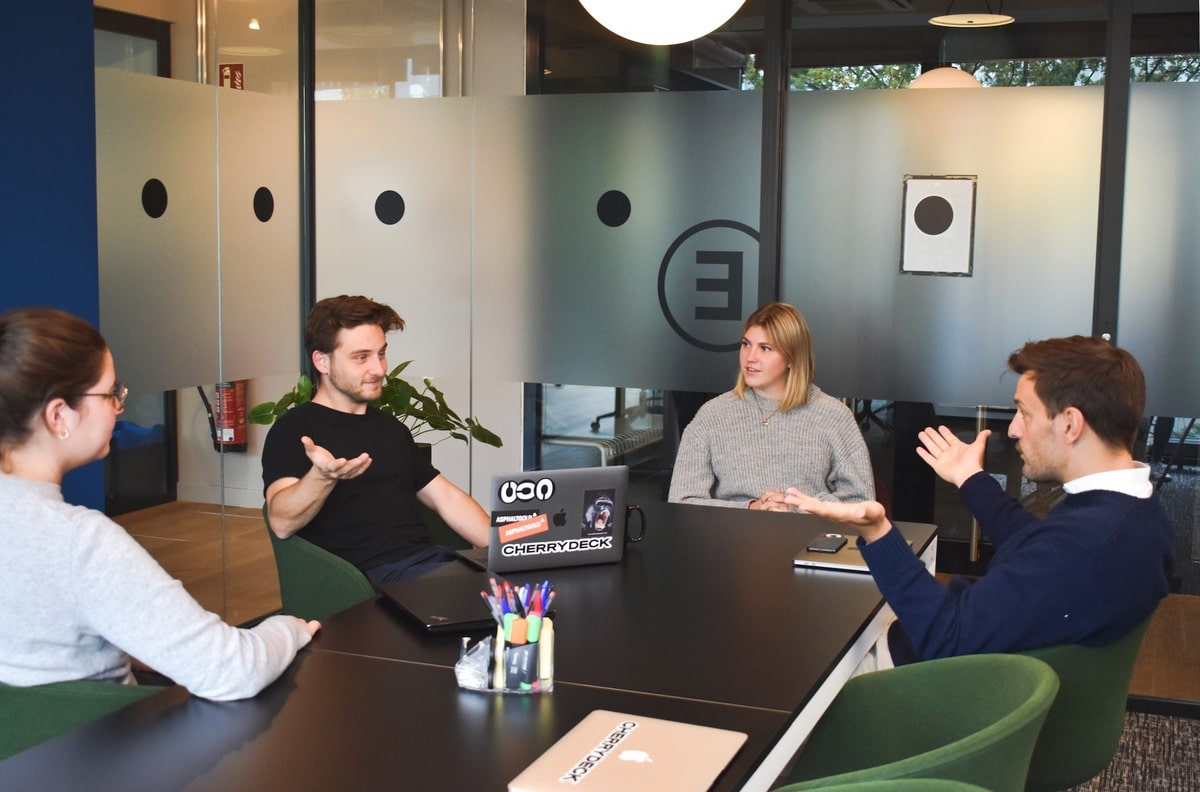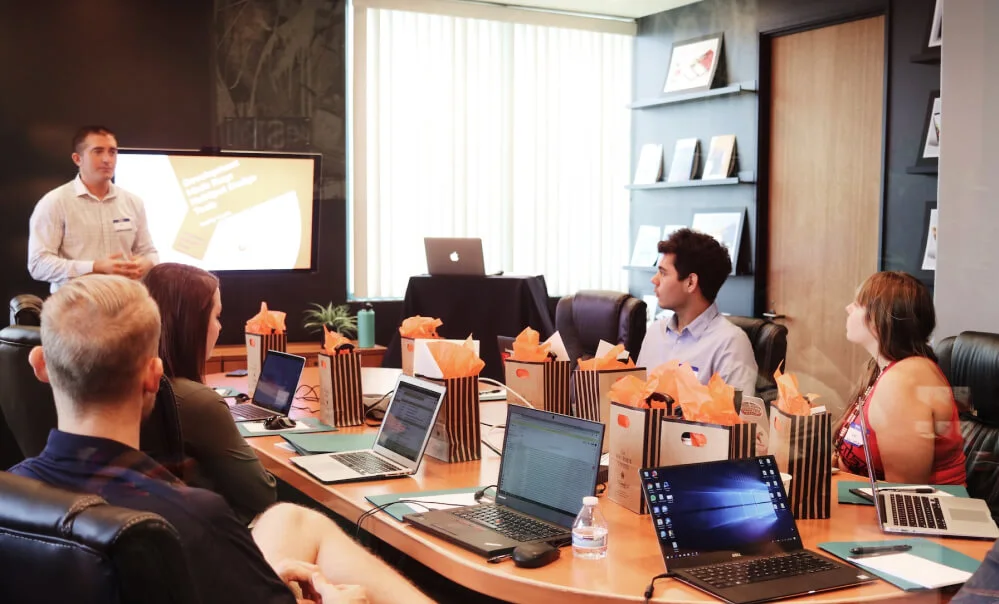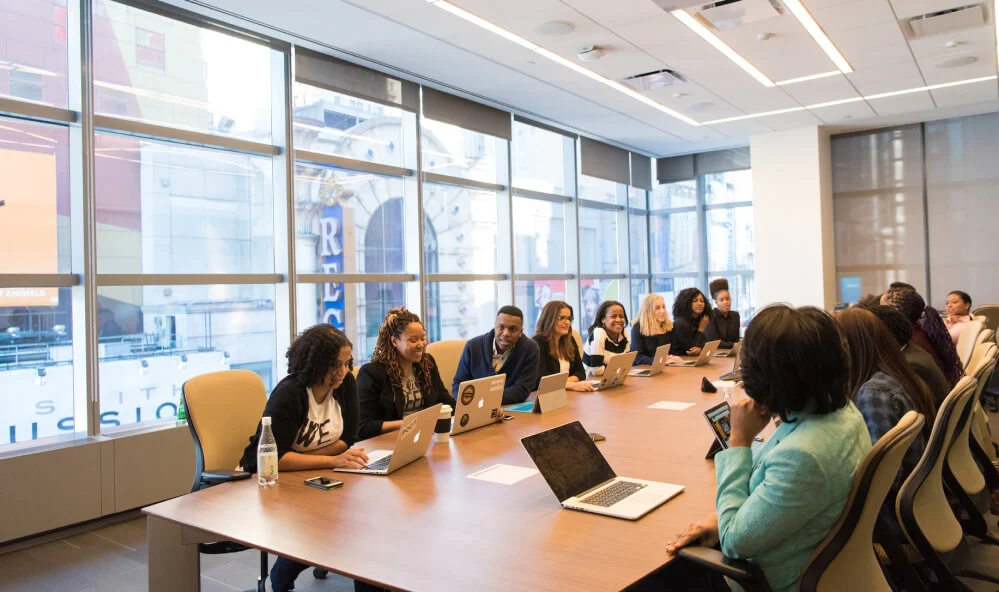Facilitation: what it is and how to apply it in business

Every year, business faces more and more new challenges that require managers to respond correctly and make informed decisions. The latest business trends are based on one simple idea: to work effectively, it is necessary to work in a team. In this case, the manager is faced with the task of not just assembling a team, organizing work processes, but building effective interaction and communication within the team. At this stage, many people have difficulties with which they do not know what to do.
What is facilitation

Facilitation today refers to the professional organization of a group discussion aimed at achieving set goals. For this purpose it is suggested to use tools and practices that help to involve participants in the conversation. Literally, facilitation translates from English as facilitation of the process. The team should jointly develop a solution to the problem identified at the beginning of the discussion and move on to implementation.
In simple terms, facilitation is used in cases where active group discussion is necessary: work meetings, brainstorming sessions, seminars. At such events, it often happens that a few of the most active participants are constantly talking, while the others either lack time or the courage and desire to express their position. As a result, the opinions of others go unheard. Facilitation techniques are designed to address this problem. It helps to structure the discussion in such a way that all ideas and thoughts are voiced. At the same time, unlike Agile methodologies, implementation does not require months of preliminary preparation and business process re-engineering.
Facilitation in psychology
The term was first mentioned by American psychologist Robert Zajonc in the 1960s. In a series of experiments, he decided to check how well cockroaches cope with mazes of different complexity. It turned out that easy mazes insects overcome faster when working together and under the supervision of other individuals, and complex – alone and without outside observers. Later, he confirmed the discovery with similar tests with humans and formulated the theory of social facilitation, according to which circumstances influence the quality of work.
The theory was further developed in the articles of another American psychologist, Carl Rogers. He proposed a new view on the definition of the teacher’s role in the education process. According to Rogers, a teacher should not so much impart knowledge to students as build a personal relationship with them based on trust, recognition and empathy. A positive attitude towards the student helps to unlock his potential. For this purpose, it is necessary to create an atmosphere in the classroom where students can easily communicate, actively participate in discussions without criticism and pressure from the instructor. Over time, the methodology has moved beyond the educational sphere and has been applied in other areas, particularly in business communications.
Goals of facilitation
Different methods and techniques are used in facilitation, the choice of which is determined by the expected outcome. Some help to generate ideas and new solutions, others to reach a common solution, and still others to increase productivity. The methods are used alone or combined depending on the objectives.
For example, the team can gather to figure out what direction to take and hear others’ opinions on it. Or they might discuss how different departments in the company organize training for new employees. In such a meeting, participants share their experiences and knowledge. The third type of meeting is idea generation. At the beginning of such a session, a problem is identified and everyone proposes a solution. Then the best ideas are sent to work. Teams can also get together to make important decisions, such as which project to take on and who will be responsible for its implementation.
Who is a facilitator
The success of group work depends on two factors: the presence of participants with expertise in the issues under discussion and the proper organization of the discussion process. These two components will facilitate the group work and make it as productive as possible.
It is the facilitator who organizes and directs the process of communication. In the absence of a moderator, conversations drag on and turn into chaos. Extroverts pressure introverts, people with quick thinking push others, and some people are not ready to speak publicly in front of others. As a result, not all participants are happy with the decisions made, which can affect their implementation. One of the facilitator’s tasks is to structure the discussion in such a way that everyone can talk about his vision. Employees should understand what the speaker really wanted to say and jointly come to a common solution to the problem.
Can a leader be a facilitator? In exceptional cases. A facilitator should concentrate on the discussion process and remain indifferent to the issue at hand. With participants, the opposite is true. They are immersed in the topic and do not interfere with organizational processes. If the leader assumes the role of facilitator, the group is deprived of a powerful expert who will bring useful ideas and thoughts. At the same time, the leader must remain impartial, which in practice most often does not happen. The result is unproductive communication that leaves everyone with a residue. Facilitation skills will only be effective if everyone fulfills their role.
Most often, the role of facilitator is taken on by external specialists from business, consulting or internal specialists who have completed courses or trainings on facilitator training and have the relevant knowledge and skills. During a group discussion, the facilitator assumes several roles: motivator, mediator and moderator. He keeps the participants engaged, creates a favorable environment for free discussion and steers the discussion in the right direction to maintain effectiveness.
The facilitator always takes a neutral position. He does not make decisions, does not teach the team how to act correctly, but only helps them to discover the problem and make a decision through constructive discussion. Even if he is an expert in the issue under discussion, he does not interfere in the conversations.
To summarize, let us once again outline the characteristics of the facilitator’s role.
| The facilitator should | The facilitator must NOT |
|---|---|
| Maintain focus on the issue at hand | Taking on the role of expert |
| Adhere to the designated time limit and structure of the discussion | Allow chaotic discussion |
| Asking questions and listening | Participate directly in the discussion |
| Engage participants in discussion | Independently interpret the words of other participants |
| Ensure that all opinions are taken into account | Ignore the ideas of the participants |
Why you need facilitation in business

Facilitation techniques are used when a non-standard, creative problem needs to be solved and its solution is not obvious, or when group discussion and the opinion of various experts are required. Transferring this description to business problems, the following list of potential situations for the use of facilitation is obtained:
- meetings on new projects;
- strategic planning;
- summarizing the year;
- crisis sessions;
- development of new products and services;
- developing a corporate culture;
- branding;
- conflict resolution.
Facilitation techniques are most often used in project work, as the maximum effect is achieved when working with complex tasks. The principles of Agile teams are very similar to them. Individual coaching is also a kind of facilitation, where instead of group discussion individual work is carried out.
It is important for businesses to respect the different opinions within the team and give everyone a chance to speak up and be heard. The facilitation model gives employees the necessary sense of importance and ownership of the final result. They are happy to be involved in the generation of new ideas, their implementation and development.
The team makes its own efforts to solve the issue. This contributes to the development of self-leadership – responsibility and motivation increase, productivity grows. Employees actively communicate within the team, independently break down complex tasks into subtasks, compare them and delegate them. However, the facilitative management style has disadvantages. Due to the large number of different opinions, ideas, work can look chaotic. A manager needs facilitation techniques because they systematize this chaos.
Facilitation methods and techniques

There are different facilitation techniques and methods that help a team to achieve the desired result. Let’s look at some of them.
Brainstorming
The group is free to brainstorm any ideas for solving the question. The brainstorming process does not assess the quality of the proposed options – the main thing is to have as many of them as possible. All ideas are written down and then discussed.
Multiple voting
This technique can be used to further discuss the results of the brainstorming session. Participants should vote for the best suggestions in their opinion. You can vote as many times as you like. After the votes are counted, the ideas for which no one voted are removed from the list, and the discussion of the remaining solutions begins. Then a second vote takes place, but no more than half of the ideas on the list can be chosen. The team continues with this scheme until they come to a final decision.
Meta-planning
All discussion participants write on post-it notes their opinion on the topic under discussion. After the notes are collected, a collective discussion begins. This method is suitable in cases when it is necessary to get everyone’s opinion in a short time.
Working together in small teams
Help to increase participant engagement at the beginning of the meeting. The team is divided into small groups of two or three people. All groups discuss the same issue among themselves and then voice their ideas.
All Outrageous
It is used when a team needs to think creatively to solve a problem. In random order, participants voice their suggestions, starting with the phrase “it would be good if…”. The team has to come up with more than 20 ideas. In the beginning everything will be quite banal, but in the process more creative options will emerge.
Group overview
Methodology for summarizing the meeting. In the last 10 minutes, the team analyzes what was learned during the discussions and what results were achieved. It is necessary to spell out what was gained and what was not and what needs to be corrected for the next session.
Mental maps
A method of idea generation when you need to immerse yourself in the study of a particular topic. You draw a circle with a key topic, and then start developing it, moving from the general to the particular, adding new circles with subtopics and connecting them with arrows. Each subtopic can be further expanded and the chain can be continued. For drawing, you can use an ordinary notebook, a blackboard, online services or any other toolkit.
Visualizing the process through mind maps, diagrams or written discussion is an important element of facilitation. It helps you to focus, express yourself more accurately and communicate your ideas to others.
In addition to the standard basic tools, there are highly specialized methods that work with specific tasks:
- SWOT analysis – assessing the business’ position in the market for strategic planning;
- Foresight – a group search for the future image of the company based on the analysis of the current situation and current trends;
- Going beyond – a conscious refusal from the usual organization of work to improve the company’s business processes;
- Opinion polarization – the use of extremely pessimistic and optimistic opinions in a discussion.
How to assess facilitation

In this wide variety of approaches, methods and tools, it is worth remembering the purpose of facilitation – to find a common solution by working together. A good solution is one that is supported by the whole team and is bound to succeed for objective reasons. These are the two criteria by which facilitation should be evaluated.
Evaluate whether all participants were engaged in the discussion, whether they were ready to start implementing the chosen solution, and whether or not they enjoyed communicating in this format. To analyze the success, determine to what extent you were able to achieve the goal you set at the beginning of the meeting. If you were looking for a way out of a crisis situation, did the chosen idea really help the company or not? If you were doing strategic planning, did you succeed in creating an action plan?
Why facilitation is important
Facilitation skills help to create an environment where everyone can express their opinions and participate in solving a common problem. Discussions are constructive and calm, so people do not feel offended. At the same time, facilitation can be applied literally everywhere. Any human activity requires communication and building interpersonal relationships. By building the right communication culture, we can utilize the expertise of each group member and effectively achieve common goals. Facilitation skills allow us to see a situation from different angles, identify the root of the problem and make the most useful decision for the team.


